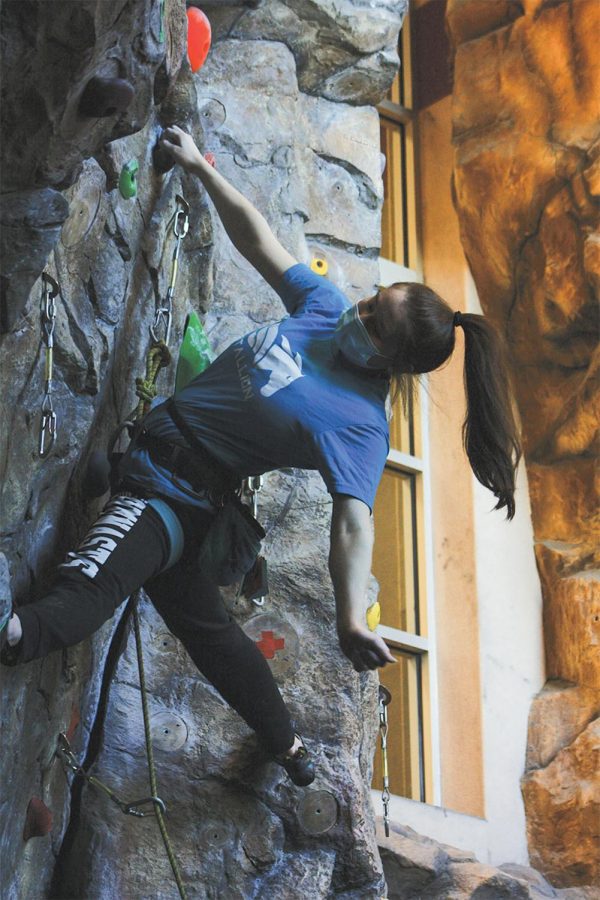Getting a grip on competitive rock climbing
Waiting for her turn to compete, senior Ann Slivken stayed in an isolation room, a tarped-off section of a rock climbing gym, to avoid seeing competition routes for three hours. Slivken read, played card games and warmed up on practice routes before leaving the room.
“You’re not allowed to have your phone or any technology because you can’t get pictures of the routes,” Slivken said.
At on-sight rock climbing competitions, athletes cannot see routes before they compete. Routes for some disciplines change, so isolation rooms prevent the advantage of knowing the route beforehand.The three main disciplines in competitive rock climbing are ropes, bouldering and speed. On ropes routes, athletes climb top-rope or lead, which are styles of climbing with a rope attached from above or below, respectively. In bouldering, athletes use bigger holds and move without a harness connected to the wall route. For speed, the same route is scaled and climbers’ scores are based on their times.
Routes in bouldering and ropes competitions change.
Skills for all disciplines are developed in team practices throughout all seasons, Dave Hudson, FirstAscent youth team coach, said in a phone interview.
Ropes season is during fall and winter. Bouldering season is during winter and spring. There is no specific competition season for speed climbing. Nationals for all disciplines is in the summer.
Sophomore Sarah Kramer competed at the youth nationals for speed climbing in 2021.
Practicingfor speed competitions is unique from other disciplines, Kramer said.
“It’s a lot more explosive movements and fast, and you really just have to do the same course every time,” said Kramer. “So you just have to do it over and over again, and get muscle memory down.”
According to Hudson, practices for lower levels are more about technique and movement skills.
“At the elite level, it’s much more physical, so the amount of power that’s needed, just like in gymnastics is really, really incredible,” said Hudson. “So we do tons and tons of different kinds of physical training.”
Slivken trains on a youth team at Life Time Fitness Warrenville.
She uses hangboards, which are boards with grooves mounted on walls, to improve grip strength, Slivken said.
Slivken and her teammates often play trivia while hangboarding to pass time, Slivken said.
According to Kramer, holds on walls are reset during practice to prepare for new routes at competitions.
According to Slivken, training at different gyms is important for gaining exposure to new holds and route-setting styles.
Slivken also sets routes for others during her practices, she said.
“Route setting helps you read routes cause as a route setter, your goal is to make only one way to get up the climb” Slivken said.
During competitions for bouldering and ropes, athletes are scored on advancement distance and challenge grade. Performance over multiple walls is considered when determining the athlete’s overall score.
Slivken placed fourth for alead competition at Vertical Endeavors on March 5.
“I used to be more stressed in competition,” said Slivken. “[I] was like, … ‘I have to place really well,’ and I kind of just do it more for fun now to see people and to try new climbs.”


